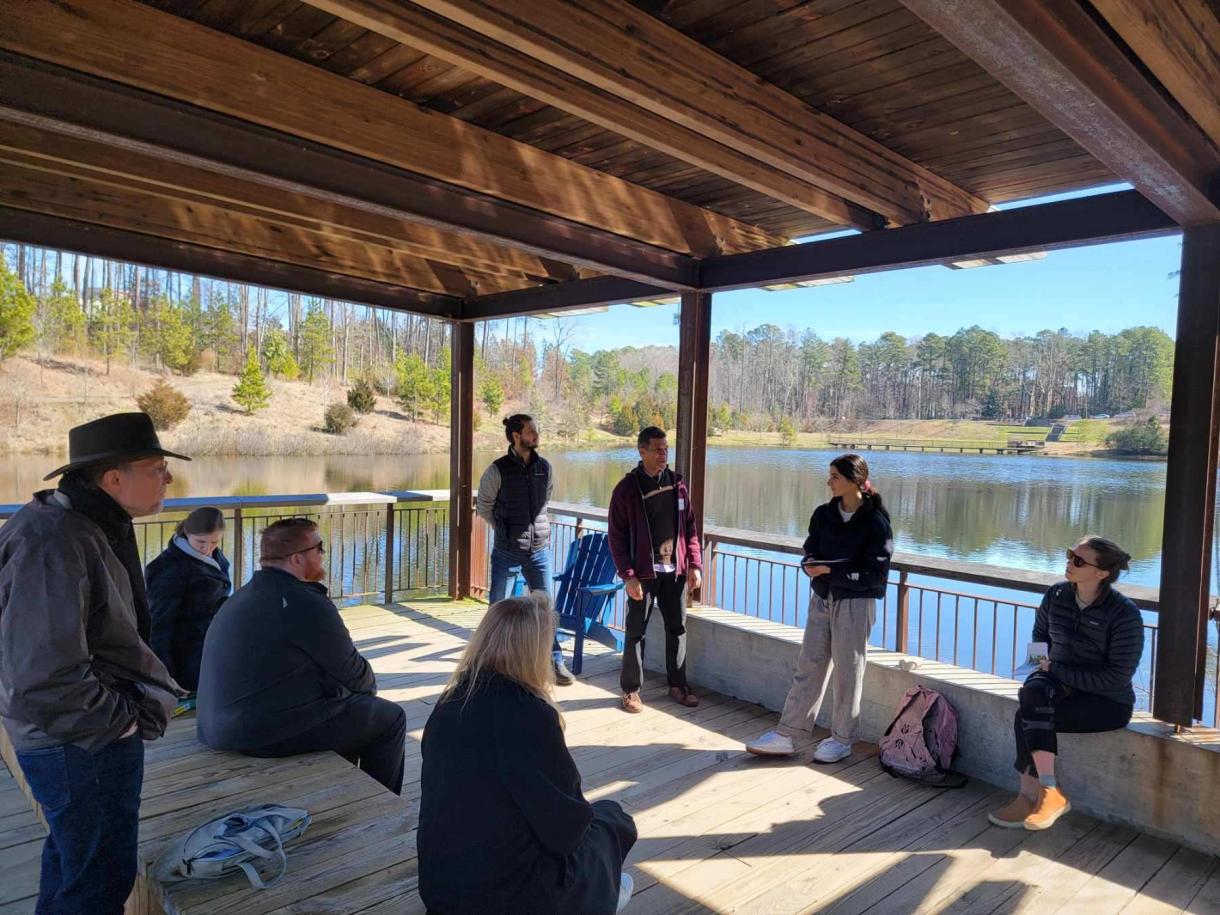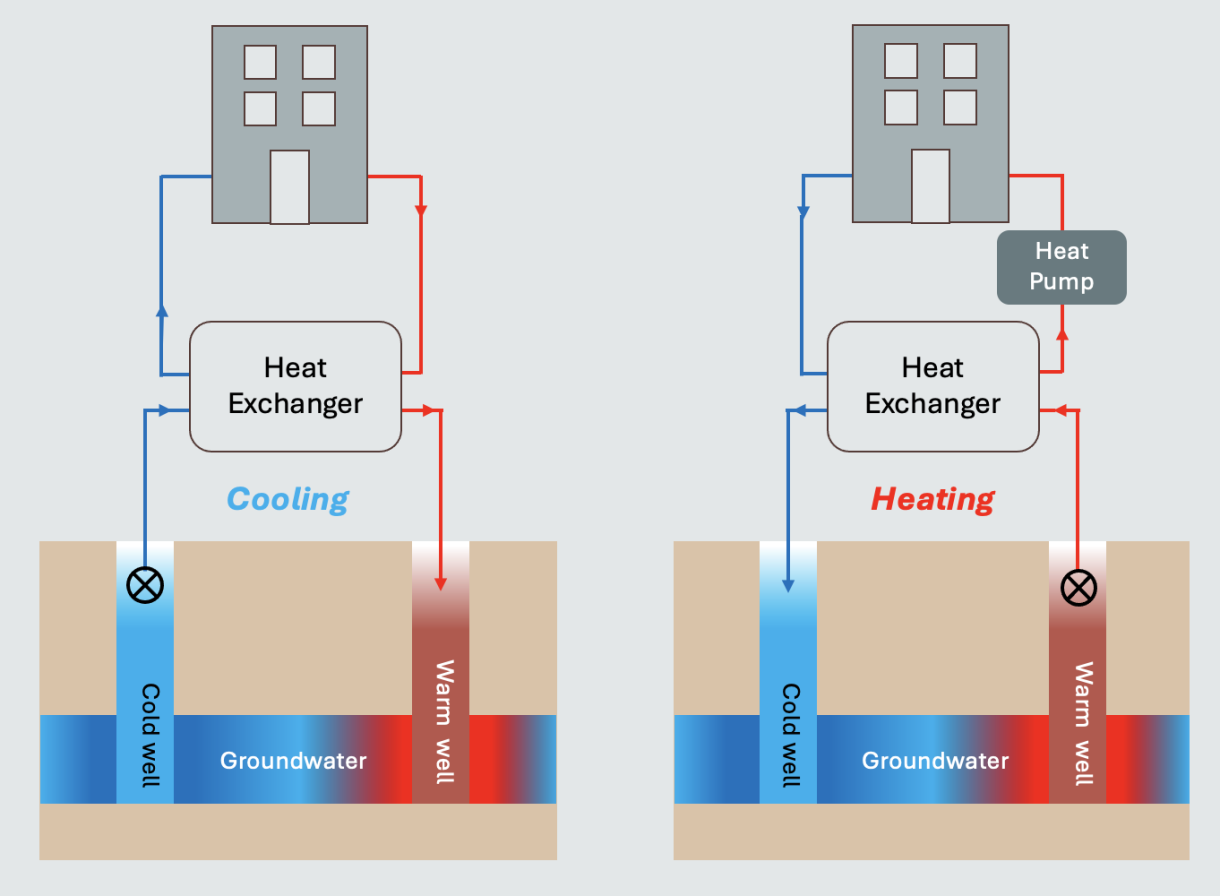
Blog
Duke's Sustainability Tour: Showcasing ATES System to Duke Leadership
On a sunny Tuesday morning (Feb. 20, 2024), Duke's sustainable faculties, Sustainable staff, and students welcomed members from Duke’s leadership and journeyed around Duke's reclamation pond to showcase the sustainable efforts the university has made over the years. As the sun cast its golden glow, the air buzzed with conversations about the proposed Aquifer Thermal Energy Storage (ATES) system as a new sustainable energy solution to fulfill the Duke Climate Commitment.
The two lead Duke researchers on this project, Dr. Brian G. McAdoo, the Associate Professor of Earth and Climate Science, and Dr. Peter Malin, the emeritus professor of Earth and Climate Science, highlighted ATES systems as a promising sustainable energy source for building heating and cooling. According to the Office of Sustainable Duke, in 2023, over 2.3 million MMBTU of energy was used, with 53% coming from natural gas. Challenges in cost-effectiveness with renewable sources like solar and wind hinder a smooth transition to cleaner energy.

ATES systems provide an alternative, utilizing mid-temperature ranges (60 - 200 degrees) widely available in deep sedimentary basins, covering 50% of Earth's land surface. The proposed ATES systems involve two wells—one for cool water storage and the other for hot water storage. In winter, hot water is pumped to release heat into buildings, and in summer, it absorbs heat. Heat pumps increase the aquifer temperature to the needed level for space heating.

Dr. Malin shared the current process with the tour attendees, accompanied by a learning tour of the future ATES test site. Recent achievements include completing borehole drilling in Phases I and II, reaching depths of 352 feet and 667 feet, respectively. Dr. Malin has also integrated the project into a class within the Bass Connections program, providing students with hands-on experience in geological assessment technologies. Under his guidance, students can design projects contributing to the larger ATES initiative.
Led by Dr. Laura Dalton, an Assistant Professor in the Department of Civil and Environmental Engineering at DU, the team explores the properties of geomaterials for the ATES system. These rocks, identified during the Duke Central Campus Geothermal Test (CCGT) well investigation, are crucial for understanding the aquifer's storage capacity. If a significant number of rocks with higher porosity and permeability are found on campus, the ATES system can store a substantial amount of water, offering immense potential for energy storage to meet heating and cooling needs.
During the tour, Brian pointed out that ATES not only provides sustainable options but, more importantly, helps solve community problems.
In North Carolina, ATES systems can alleviate the energy burden of low- and moderate-income (LMI) communities, especially during extreme weather. The average energy burden for NC households at 50% of the Federal Poverty Level (FPL) is 32.8%, with rural counties facing the heaviest energy burdens across all income brackets due to heating and cooling needs. Implementing ATES systems not only reduces carbon emissions but also provides more affordable energy, offering equitable and economic solutions for decarbonizing energy.
If successful, this initiative would represent a groundbreaking effort in establishing the first ATES system in the northeast region of the United States, holding significant potential to address the pressing energy issue.
